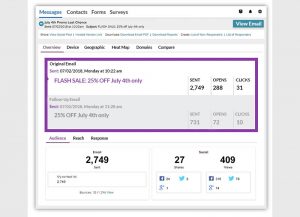Motivation is at the heart of employee productivity and retention. Organizations with highly motivated and engaged workers are 21 percent more profitable, but only 19 percent of employees consider themselves “very engaged.” Employers need to know how to motivate employees, or they risk falling behind their competitors.
This article offers 13 effective ways to motivate employees by focusing on critical aspects of your organization, such as culture, recognition, and feedback.
1. Build a culture that motivates employees daily
To sustain employee motivation over the long term, you need to develop a culture that supports all team members and inspires them to bring their best on a daily basis. Otherwise, even the most enthusiastic employees will find their motivation waning. Almost all job seekers — 88 percent — consider culture as an important factor when deciding where to work, and the culture of an organization is a top factor that impacts employee satisfaction. Entrepreneurs know that a great culture leads to improved employee performance across the organization — 86 percent have seen a link between culture and productivity.
There are a few steps any organization can follow to build a culture that motivates employees and means business. Start with identifying traits you want your culture to exemplify and that your employees will value, then get your leadership on board with building that culture. This second step is key, as almost half of employees say leadership is “minimally” or “not at all” committed to improving organizational culture. Once leaders start actively focusing on culture by implementing and participating in cultural initiatives, your employees will feel more connected to your company’s values and mission. Ensure your team members can weather difficult times and remain motivated all-year round by maintaining culture continuity.
2. Take advantage of the motivational power of recognition
Research shows that recognition is one of the most effective ways to motivate employees. 80 percent of employees say that recognition is a strong source of motivation, and 90 percent say that receiving recognition motivates them to work harder. However, many companies continue to neglect recognition: a lack of recognition is the third most common reason employees choose to leave an organization.
Any recognition strategy needs to incorporate both monetary and social recognition. According to a report by Aptitude Research Partners, organizations using social recognition have 40 percent higher employee productivity compared to organizations not using it.
Here are some recognition best practices to help you start using it as a key motivator:
- Recognition should be provided frequently — not just during work anniversaries — and in the moment.
- Any time you send a recognition, be specific and transparent when describing the key behavior demonstrated. This is extremely important because 92 percent of employees agree when they’re recognized for a specific action, they’re more likely to take that action again in the future.
- Tie recognition to company values to show employees that those values are more than just words and incentivize employees to practice them.
- Consider using a points system for rewards, which allows employees to redeem their points for a reward of their choosing that they find meaningful.
- Finally, use an employee recognition platform so your team members can provide recognition from anywhere, whether they’re on desktop or mobile. You should also leverage data insights to properly measure and adjust your recognition program for optimal success.
3. Collect and respond to employee feedback
Employees are far more motivated when they have a voice. 73 percent of employees who feel heard by employers say that they are motivated to perform their best work, and 90 percent of workers are more likely to stay at a company that listens to and acts on feedback.
Collecting feedback frequently gives employees a chance to express themselves and makes them feel valued. Use employee pulse surveys to get a check on how your employees are feeling and see whether your motivational efforts are succeeding. You can also implement a workplace chatbot that provides an always-on channel for employees to confidentially share feedback.
Listening to employee feedback is just the first step; employers need to take visible actions addressing it. After conducting and closing your employee pulse survey, set aside time to measure and analyze the results carefully. What are employees telling you? How do results compare to the last study? What trends are you seeing? Consider the response rate, evaluate the data as well as the comments, and review with managers and leaders. When an employee sees that their feedback has an actual impact on business decisions, they know that their voice matters and they’ll continue to provide honest, valuable feedback.

4. Focus your leaders on motivation
Employees look to management to steer the organization and rely on them to make the right decisions for the business. Because of this trust, leaders have a significant impact on employee motivation. “The quality of senior leadership” is one of the top two factors of employee satisfaction, but only 2 in 10 employees strongly agree that their performance is managed in a way that motivates them to do outstanding work.
Emphasizing that leaders need to prioritize and understand how to motivate employees is the first step. Once the leadership team is on the same page, there’s no lack of opportunities for them to start motivating employees, and one of the best is recognizing team members. Receiving praise or a reward from your manager or another leader can make a huge impact. A Gallup workplace survey revealed nearly one-quarter of employees said the most memorable recognition comes from a high-level leader or CEO. The more that leaders recognize employees publicly, the more likely it is employees will feel valued and motivated.
Coaching is another way that managers can build stronger teams and boost employee motivation. Practicing workplace coaching ensures that managers understand the importance of their role in guiding and developing employees, and it helps them improve core skills like observation and communication. It also directly speaks to millennials’ desire to have a different type of relationship with managers.
5. Tailor motivation to meet team members’ individual needs
Employee motivation is not a one-size-fits-all methodology — personalization is essential. Individuals are motivated by different factors, both intrinsic and extrinsic, and they are interested in new experiences and motivated by meaningful work. Managers need to learn how to motivate employees on a personal level.
Personalize employee motivators by first asking employees what their goals are, what ideas they have, and what form they want rewards to take. Some may especially value development opportunities to learn about topics they have real passion for. Others may want to pursue new work projects that align with their interests or excite them, which provides a valuable opportunity to connect them with other team members and foster a greater sense of community. And when it comes to providing rewards, choosing a recognition platform with a robust, ever-growing catalog ensures that they’ll always find something that fits them to a T.
6. Provide paths for career advancement
There are few things more motivating than taking the next step in your career. Prioritizing learning and development opportunities and defining a clear career path is key to employee motivation and improves retention and ROI. Some of the most prominent companies in the world owe their success in part to their focus on internal development. For example, businesses on the Fortune 100 “Best Companies to Work For” list provide almost double the number of training hours for full-time employees compared to companies that aren’t on the list.
There are many ways managers can foster professional growth, like paying for classes or providing them in-house, giving actionable feedback to employees, or defining a new role within the organization that fits a team member’s unique talents. Making these opportunities available strengthens your company and serves as a strong, daily motivator for employees.
7. Empower employees to demonstrate trust
Employees must have faith in leadership, but it’s equally important for managers to demonstrate trust in employees. Empowering employees by giving them more autonomy and independence has an established effect on motivation. While all team members need clear direction on what’s expected of them, the more control they have over their own work, the more satisfied and motivated they’ll be.
You can also challenge employees by delegating additional responsibilities that align with their strengths and interests. If the employee rises to the occasion, reward them. If they aren’t quite up to the task yet, take the opportunity to coach them and further develop important skills.
8. Practice transparency
Practicing transparency at every level in the organization builds trust and motivates employees. A study by professors at the Warwick School of Business and the University of Zurich found that when organizations are transparent, “effort almost doubles relative to non-disclosure” of information.
Employees want to know everything they can, including how the business is doing, where they fit into the big picture, and what the competition is doing. Whether it’s sharing the results of a survey, implementing an open door policy (either virtual or physical), or providing insight into key company decisions, organizations that practice transparency and share strategic business information can control the conversation while building a culture of trust and collaboration.
9. Set goals for employees
Goals are essential for motivation, as they present a path forward and give employees a sense of tangible progress. Long-term goals provide a significant sense of accomplishment when employees reach them, while short-term goals serve as incremental achievements that sustain motivation over time. Track both long-term and short-term goals, and make goal-setting a collaborative process for managers and employees to ensure that objectives are clear, meaningful, and realistic.
10. Establish a healthy work-life balance
The anxiety and exhaustion that results from overwork is a powerful demotivator. Today’s digital work environment gives employees much-needed flexibility, but it also makes it difficult to know when to turn off. Working more hours doesn’t necessarily lead to higher productivity or better results. A poor work-life balance also turns off potential employees and makes existing employees look for jobs elsewhere, as shown in a recent study by Gartner, which revealed that work-life balance is valued more than ever before, with “an upward multi-year movement in the importance of work-life balance.”
It’s up to employers to foster a healthy work-life balance and encourage employees to take the time they need to recharge. Leading organizations are implementing programs to alleviate stress, including child-care assistance, wellness initiatives, and mandatory paid time off. Giving employees the flexibility to fit their work schedules around their lives can also significantly reduce employee stress and boost productivity and motivation.
11. Encourage collaboration
Collaboration leads to more motivated employees and better performance — in fact, organizations with a focus on collaboration are five times more likely to be high performing. When team members work together, they build relationships that serve as the foundation for a positive culture, and their combined efforts help meet business goals more quickly and ensure consistent successful results. It also provides a great opportunity for team bonding and enables employees to build strong relationships.
12. Make work meaningful with company values
Company values can be a powerful tool for engaging and motivating employees. When team members are provided with a vision they can relate to and rally around, they work harder. Millennials are particularly motivated by company values they can invest in, with nearly nine out of ten millennials saying they would consider taking a pay cut to work at a company whose mission and values align with their own.
A mission statement that truly reflects the organization’s vision and values is a great start, but you need to follow through on what it promises. Embed the vision and values expressed in the mission statement into the culture of the organization to drive meaningful employee experiences and a more motivated team.
13. Fight boredom by keeping things fresh
Even the most fun and challenging jobs can become routine over time, so keep your team motivated by introducing novelty into the workplace. There’s a strong relationship between novelty and motivation, and providing employees with exciting new opportunities and activities is an easy way to keep them engaged. Friendly competitions, collaborative games, and regular team events will help keep every day just a little bit different.
Check in with employees regularly and ask what they need to maintain momentum. If necessary, consider changing up work roles, responsibilities, and routines to sustain engagement and motivation. Not only will you keep things fresh and exciting, you’ll also boost wellness and engagement while showing that you care.
Request a live demo of Achievers Listen and/or Achievers Recognize today to find out how Achievers can help you reap the benefits of a motivated workforce.
Business & Finance Articles on Business 2 Community
(132)
Report Post






